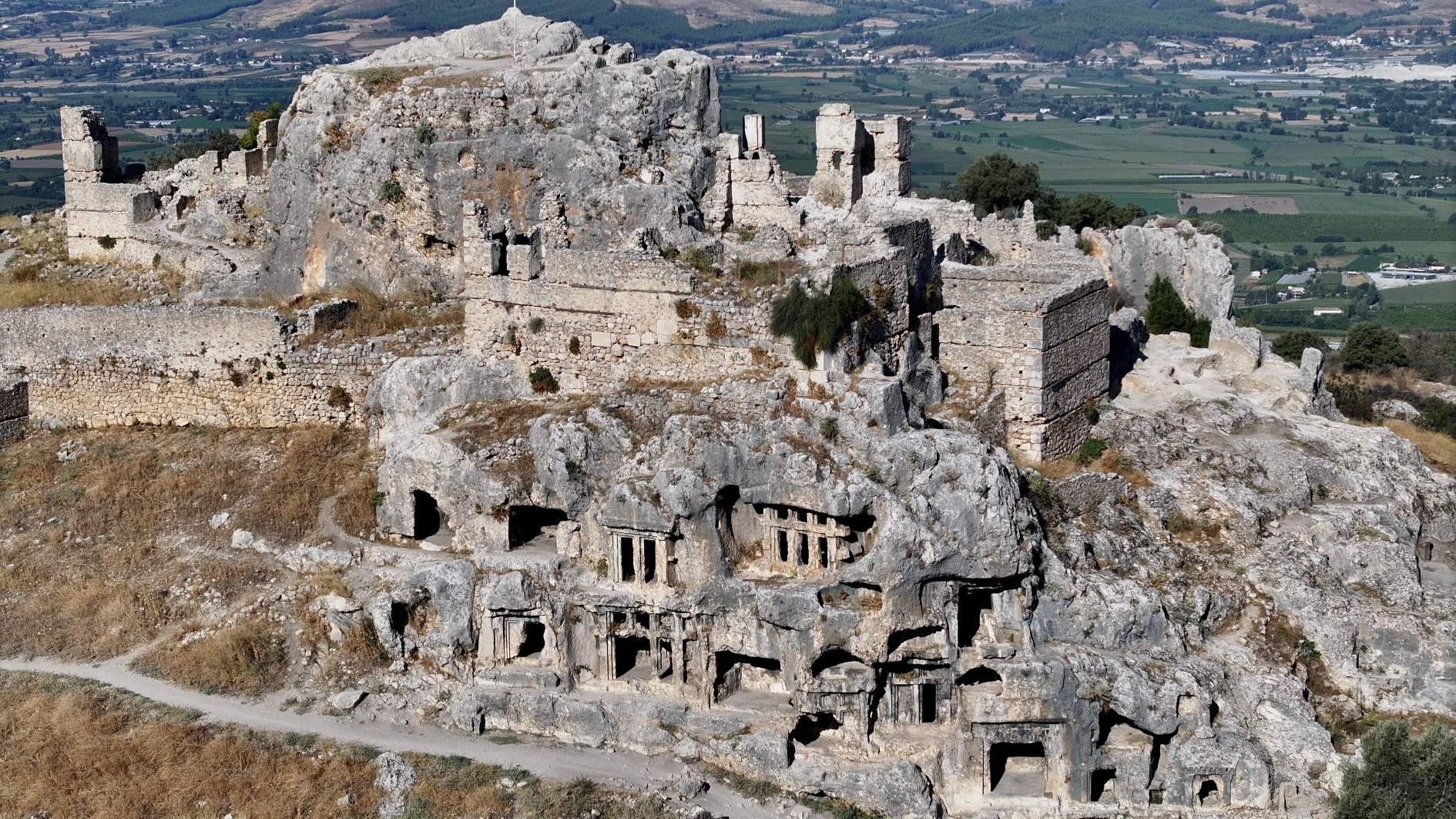
Restoration work is underway in the ancient city of Tlos, located in the Seydikemer district of Muğla, to revive the Roman-era stadium and its surrounding shops.
The excavations and restoration, led by Professor Taner Korkut of Akdeniz University’s Department of Archaeology, continue year-round without interruption. Tlos, one of the major settlements of the Lycian civilization, is listed on UNESCO’s Tentative World Heritage List along with other ancient Lycian cities in Antalya and Muğla.
Following the near-completion of restoration at the city’s theater, work is now focused on the stadium and the row of shops that once opened onto its central promenade. Last year, excavations began to clear the soil and debris that had filled the shops due to centuries of erosion. Once cleaned, the city’s main street will be revealed.
Korkut explained that the work is being carried out under the Culture and Tourism Ministry’s “Heritage for the Future” project. He said that in the early 5th century B.C., the people of Tlos lived around the acropolis palace and slopes, while the northern and eastern slopes served as necropolises. With the arrival of Alexander the Great, urban planning changed and residents moved downhill to build major public structures such as an agora, stadium, baths, council hall, theater and temples.
“The stadium ground was a multifunctional space,” Korkut said. “There was a single-sided seating tribune, and opposite to it, shops opened onto both the stadium ground and the agora. The city’s earliest road also lay here. In the Early Roman period, the Kroneia Festivals, held on behalf of all Lycia, were organized in this stadium. Later, in the late second century A.D., a pool was constructed in the center, and we know that staged naval battles were performed here.”
He noted that a massive earthquake in 141 A.D. devastated Tlos and much of Lycia, causing extensive destruction. “The southern half of the stadium collapsed, rendering it unusable. It was from this period onward that the area began to function more like a theater space for shows,” Korkut said.
An eight-meter-wide street
Excavations have revealed a monumental street adjacent to the shops. “It is about eight meters wide, bordered by a 1.5-meter sidewalk, with a stone-slab pavement,” Korkut explained. “We nearly cleared the entire street and part of the gate opening to the agora. We also began clearing the eroded soil inside the shops. By the end of this year, the shops facing the street will be fully cleaned.”
Each shop, measuring roughly 30 square meters, has an arched structure. “Restoration will include rebuilding their facades and reinstating the colonnaded gallery in front,” he said, adding that the team plans to complete the overall work by 2026.